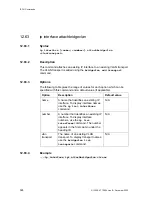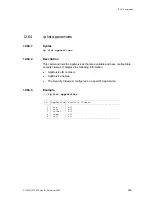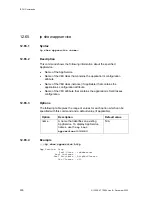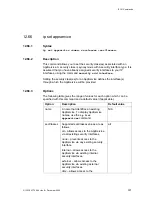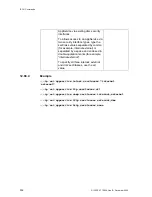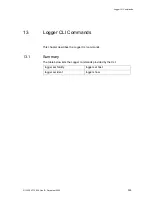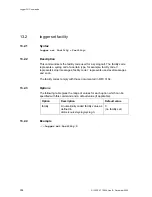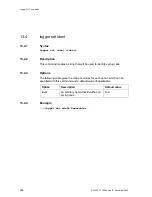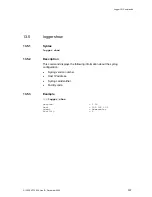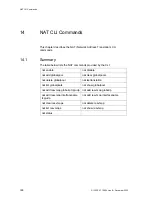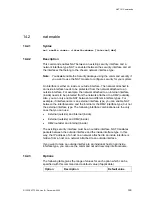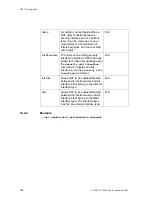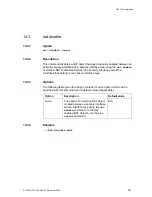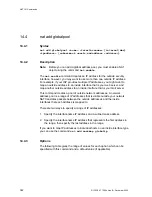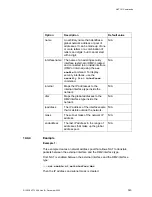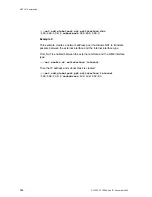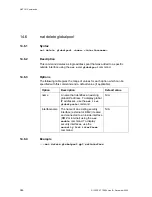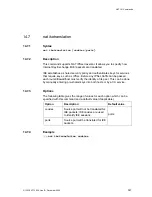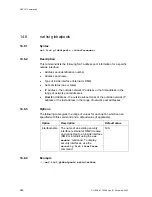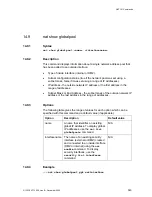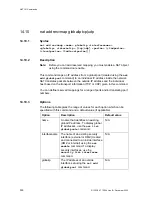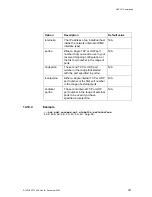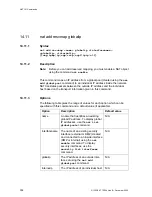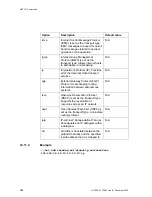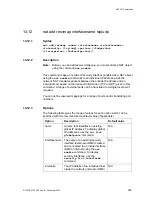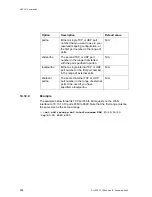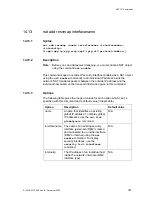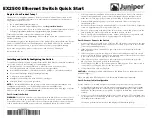
NAT CLI Commands
342
2/1553-ZAT 759 94 Uen B – December 2005
14.4 nat
add
globalpool
14.4.1 Syntax
nat add globalpool <name> <interfacename> {internal|dmz}
<ipaddress> {subnetmask <mask>|endaddress <address>}
14.4.2 Description
Note:
Before you can add a global address pool, you must enable a NAT
object using the command
nat enable
.
The
nat enable
command creates an IP address for the outside security
interface, however, you may want to use more than one outside IP address.
For example, if your ISP provides multiple IP addresses, you might want to
map an outside address to an inside interface that is your web server, and
map another outside address to an inside interface that is your mail server.
This command creates a pool of outside network addresses. A network
address pool is a range of IP addresses that is visible outside your network.
NAT translates packets between the outside addresses and the inside
interfaces that each address is mapped to.
There are two ways to specify a range of IP addresses:
1. Specify the interfacename IP address and a subnet mask address.
2. Specify the interfacename IP address that represents the first address in
the range, then specify the last address in the range
If you want to map IP addresses to individual hosts on an inside interface type,
you can use the command
nat add resvmap globalip
.
14.4.3 Options
The following table gives the range of values for each option which can be
specified with this command and a default value (if applicable).

